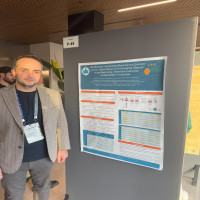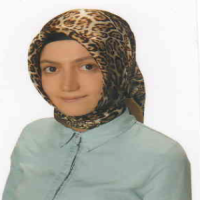Research Article
Review
Aim & Scope
The European Food Science and Engineering is an international open-access journal that publishes the high quality original research and review articles related to food science and food engineering areas such as engineering aspects of the food processing, measurement, control, packaging, preservation, storage, distribution and also the design and production of novel foods and the design and operation of new and novel techniques, equipment and plant. The journal aim is to provide a forum for communication of cutting-edge advancements in food engineering R&D and to provide scientific information and important results obtained to the wide masses and readers and also to promote the exchange of ideas, experiences and information between practicing educators and food engineering researchers all over the world.
The European Food Science and Engineering is doubled-blind peer-reviewed journal published two times a year (march and september) accepting only English manuscript. EFSE supports open access to manuscript it publishes and does not have Article Processing Charge (APC) or any submission charges.
EFSE covers a range of topics include, but are not limited to the following fields; heat and mass transfer in food processing, liquid and solid foods transports, heating and cooling processes for foods, reaction kinetics in food systems, phase and state transitions and transformations in food systems, food freezing and frozen food storage, membrane separation techniques, food dehydrations, thermal processing of foods, non-thermal processes in the food industry, food preservation technologies and food packaging, control and automation in food processing, food process design and operation, mathematical modelling, nanotechnology and the applications of nanotechnology in the food industry, analytical and sensory techniques and food physics, food microstructure and characterization, food microbiology and biotechnology, mathematical modelling for food processing, engineering considerations for cleaning and disinfection in the food industry.
Author Guidelines
The European Food Science and Engineering (EFSE) is an international open-access journal that publishes the high quality original research and review articles related to food science and engineering areas such as food processing, measurement, control, packaging, preservation, storage, distribution and also the design and production of novel foods and the design and operation of new and novel techniques, equipment and plant. The journal aim is to provide a forum for communication of cutting-edge advancements in food engineering R&D and to provide scientific information and important results obtained to the wide masses and readers and also to promote the exchange of ideas, experiences and information between practicing educators and food engineering researchers all over the world.
Submission of an article will be held to imply that it presents original research that has not been published previously (except in the form of an abstract or as part of a published lecture or academic thesis), that it is not under consideration for publication elsewhere, that its publication is approved by all authors and tacitly or explicitly by the responsible authorities where the work was carried out, and that, if accepted, it will not be published elsewhere in the same form, in English or in any other language, including electronically without the written consent of the copyright-holder. Editors are not responsible for any plagiarism. Authors are responsible for obtaining from the copyright holder permission to reproduce any figures for which copyright exists. The publisher does not give any warranty express or implied or make any representation that the contents will be complete or accurate or up to date. The publisher shall not be liable for any loss, actions, claims, proceedings, demand or costs or damages whatsoever or howsoever caused arising directly or indirectly in connection with or arising out of the use of this material. All the authors need to agree the antiplagiarism rules and signed agreement in Cover page. All the manuscripts will be check for plagiarism with ithendicate or Turnitin programs. Cover page mandatory will be containing 3-5 reviewers (name, affiliation and e-mail address) recommended to review manuscript intend to publish in EFSE. Papers featuring animal trials and cell cultures are outside the scope of the journal and will not be considered for publication.
The European Food Science and Engineering is doubled-blind peer-reviewed journal published two times a year (march and september) accepting only English manuscript. EFSE supports open access to manuscript it publishes and does not have Article Processing Charge (APC) or any submission charges. The journal provides DOI number each manuscript accepted.
Manuscript categories and requirements
Original Papers –reports of new research findings or conceptual analyses that make a significant contribution to knowledge. Research papers must be no long longer than 6000 words, including abstract and references, but without tables, figures and the corresponding legends
Reviews – critical reviews of the literature, including systematic reviews and meta-analyses.
Research Note - presents novel process engineering oriented research developments or preliminary results of studies that may be of interest to readers. Research notes should be no longer than 2,500 words including abstract and references but without tables, figures and the corresponding legends, and should be in the same style and format as regular research articles.
Editorial articles–are usually commissioned but unsolicited material may be considered. Please approach the Editor-in-Chief before submitting this material.
Manuscript submission
All submissions should include following documents:
1. Manuscript should be submitted to journal’s online submission system by the corresponding author;
2. Papers should be written with fluent English without any grammatical and typographical errors. Manuscripts with any of those errors will be rejected and sent back to the authors for corrections before submission and review;
3. Manuscript-text must be saved as a MS Word format version 2003 or above;
4. Manuscripts should be typed double spaced throughout using Microsoft Word Software on A4 papers (210 mm x 297 mm) with Times New Roman font 12 pt. and 2,5 cm margins on all sides;
5. Continuous line numbering must be added;
6. Title page with author names, titles, addresses and contact information (in Word format);
7. Abstracts must not be longer than 200 words;
8. There must be no more than 5 key words placed underneath the abstracts;
9. Highlights must be included (a summary of your main achievements in 3-5 bullet points no more than 85 characters each);
10. Figures and tables must be submitted as separate files and are clearly labeled;
11. Article divide into clearly defined and numbered sections. Subsections should be numbered 1.1 (then 1.1.1, 1.1.2, …..), 1.2, etc. (the abstract is not included in section numbering);
12. If there is more than one appendix, they should be identified as A, B, etc. Formulae and equations in appendices should be given separate numbering: Eq. (A.1), Eq. (A.2), etc.; in a subsequent appendix, Eq. (B.1) and so on. Similarly for tables and figures: Table A.1; Fig. A.1, etc.;
13. The international system of units (SI units) must be used only;
14. If analytical data are reported in tables and/or figures: Number of replications should be mentioned in the legend or a footnote and standard error or other evidence of reliability of data must be given;
15. Math formulae should be submitting as editable text and not as images. Present simple formulae in line with normal text where possible and use the solidus (/) instead of a horizontal line for small fractional terms, e.g., X/Y. In principle, variables are to be presented in italics. Powers of e are often more conveniently denoted by exp. Number consecutively any equations that have to be displayed separately from the text (if referred to explicitly in the text);
16. Your Cover letter should explain the novelty of the research presented, that your paper presents original research, that it has not been published previously and that it is not under consideration for publication elsewhere;
17. Document showing the result of iThenticate or Turnitin (max. 20% match accepted);
18. Transfer of Copyright Form. This form should be filled and signed by all authors and sent electronically as a scanned copy. Authors of the accepted papers should send the original version of this form.
Main Text File
Authors are encouraged to prepare the manuscript text using their own words, and discouraged to reproduce text from previously published literature, even if it was an earlier published work of the author. The text file should be presented in the following order:
1. A short informative title that contains the major key words. The title should not contain abbreviations.
2. A short running title of less than 40 characters;
3. The full names of the authors;
4. The author's institutional affiliations where the work was conducted, with a footnote for the author’s present address if different from where the work was conducted;
5. Abstract and keywords;
6. Main text include introduction, material and methods, results, discussion (may be combined result and discussions sections), conclusions, acknowledgements and references;
7. Tables (each table complete with title and footnotes);
8. Figure legends;
9. Appendices (if relevant);
10. Figures and supporting information should be supplied as separate files.
Acknowledgements
Acknowledgements should be brief at the end of the text and may include source of financial support. The contract number should be provided.
References
Text citations should follow the author-date method whereby the author's last name and the year of publication for the source should appear in the text, for example (Gul, 2018; Gul and Tornuk, 2015). Use et al after the first author’s family name for citations with three or more authors (Gul et al., 2019). For citations of the same authors published on the same year, letters after the year should be used (Gul, 2015a). The complete reference list should appear alphabetically by name at the end of the paper.
A sample of the most common entries in reference lists appears below. For more information about APA referencing style, please refer to the APA FAQ. Note that for journal articles, issue numbers are not included unless each issue in the volume begins with page one, and a DOI should be provided for all references where available.
Journal article
Gul, O., Saricaoglu, F. T., Besir, A., Atalar, I., & Yazici, F. (2018). Effect of ultrasound treatment on the properties of nano-emulsion films obtained from hazelnut meal protein and clove essential oil. Ultrasonics sonochemistry, 41, 466-474.
Book
Bradley-Johnson, S. (1994). Psychoeducational assessment of students who are visually impaired or blind: Infancy through high school (2nd ed.). Austin, TX: Pro-ed.
Internet Document
Norton, R. (2006, November 4). How to train a cat to operate a light switch [Video file]. Retrieved from http://www.youtube.com/watch?v=Vja83KLQXZs
Conference paper
Gul, O., Atalar, I., Mortas, M., Dervisoglu, M. & Yazici, F. (2016). Effects of concentration and high pressure homogenization on hazelnut milk from cold press hazelnut oil cake. 4th International ISEKI Food Conference, Vienna, Austria.
Tables
Tables should be self-contained and complement, not duplicate, information contained in the text. They should be supplied as editable files, not pasted as images. Legends should be concise but comprehensive – the table, legend, and footnotes must be understandable without reference to the text. All abbreviations must be defined in footnotes. Footnote symbols: †, ‡, §, ¶, should be used (in that order) and *, **, *** should be reserved for P-values. Statistical measures such as SD or SEM should be identified in the headings.
Figures
Although authors are encouraged to send the highest-quality figures possible, for peer-review purposes, a wide variety of formats, sizes, and resolutions are accepted. Figures should have high resolution, minimum 600 dpi in TIFF or JPEG format. For publication purposes use grayscale images.
Figure Legends
Legends should be concise but comprehensive – the figure and its legend must be understandable without reference to the text. Include definitions of any symbols used and define/explain all abbreviations and units of measurement.
Color Figures
Figures submitted in color may be reproduced in color online free of charge. Please note, however, that it is preferable that line figures (e.g. graphs and charts) are supplied in black and white so that they are legible if printed by a reader in black and white.
Formulas and Equations
Number each formula with the reference number placed in parentheses at the end. Use Word mathematical processor for formulas with 12 pt., variances in Italics, numbers and mathematical definitions in plain text. If needed, refer as “Equation 1” in the text (….the model, as given in Equation 1).
Ethical Principles and Publication Policy
Ethical Responsibilities of Editors:
• Editors are responsible for considering publishing principles, journal objectives and international standards of the journal.
• Editors should strive to constantly improve the journal and meet the needs of readers and authors
• Editors must choose reviewers according to their subject and profession.
• Editors should ensure that there is no conflict of interest between reviewers and authors.
• Editors must obey blind review and keep the identities of reviewers/authors confidential.
• Editors ensure that the members of the editorial board and reviewers evaluate the manuscripts in an unbiased and independent manner.
• Editors are responsible for protecting the personal information of the author, reviewers and readers.
• Editors take into account the feedback from users (reviewers, authors, editorial board, readers etc.) about the published works and take the necessary actions.
• Editors are responsible for providing an open and enlightening answer to complaints from the reviewers, authors and readers.
• Editors should always be willing to publish corrections, clarifications, retractions and apologies when needed.
Ethical Responsibilities of Authors:
• Author(s) must submit original studies to the journal. That means work and results have not been published or submitted for publication elsewhere.
• Authors cannot submit their studies to multiple journals simultaneously. Each submission can be made only after the previous one is completed.
• Authors are required to state and explain the situation in the event of a conflict of interest in the articles.
• The authors ensure that their citations and quotations in their manuscripts are accurate and complete.
• Authors should check the manuscript with plagiarism programs and submit a similarity report.
• During the review process of manuscripts, the author(s) may be asked to supply raw data. In such a case, the author(s) should be ready to submit such data and information.
• Ethical reports must be submitted by the author, when necessary.
• Accepted manuscripts are not allowed to be withdrawn.
Ethical Responsibilities of Reviewers:
• Reviewers are requested to review the manuscripts in detail, unbiased and confidential manner.
• Reviewers must evaluate the manuscript objectively and only in terms of its content and ensure that the review is not influenced by nationality, gender, religious and political beliefs, and economic apprehension.
• Reviewers do not contact the authors directly. The review forms and comments for the manuscript are sent to the author (s) by the editor.
• Reviewers should use a constructive and gentle tone in review and avoid making personal comments including hostility, slander and insult.
• In case of any conflict of interests, the reviewer must inform the editor and decline to review the manuscript.
• The works, which are sent for review, can not be used by reviewers for any purpose until the evaluation process is over.
• Reviewers must evaluate the manuscript on time and by the ethical rules stated above.
Plagiarism Control
• All the studies should be prepared in accordance with ethical rules and citations should be indicated in the text.
• Authors should check the article with plagiarism programs and submit a similarity report.
Indexes
Other Indexes
Journal Boards
Editor-in-Chief


International Editorial Board







Gülşah KARABULUT atık ürünleri değerli bileşenlere dönüştürme konusunda araştırmalar yapmaktadır. Gıda güvenliğini ve kalitesini artırmak için yenilikçi termal veya termal olmayan işleme teknolojilerini araştırmaktadır. Mevcut araştırması, bitki proteinlerinin tekno-fonksiyonel özelliklerini ve bunların yenilebilir film ve kapsülleme malzemesi olarak kullanımını iyileştirmeye odaklanmaktadır.


Mohamed Ghellam, Batna 1 Üniversitesi Gıda Mühendisliği Bölümü'nde Dr.Öğretmen-Araştırmacıdır. Doktora çalışmalarını Türkiye'deki OMU Üniversitesi'nde tamamlamıştır. Şu anda esas olarak şunlar üzerinde çalışmaktadır: - Biyoaktif bileşiklerin (polifenolikler, karotenoidler, ...) ekstraksiyonu ve değerlendirilmesi. - İşleme koşullarının incelenmesi (teknikler, sıcaklık, zaman...). - Ürünlerin kapsüllenmesi, üretimi ve geliştirilmesi (çaylar, kapsülleme, kurutulmuş meyveler...). - Yan ürünlerin ve atıkların değerlendirilmesi.
Khaoula Khwaldia received her Ph.D. in Biotechnology and Food Science from the University of Lorraine (INPL, France) after graduating as a Food Science engineer from the National Agronomic Institute of Tunisia. She is currently a Professor at the National Institute of Research and Physicochemical Analysis (INRAP, Tunisia) (https://orcid.org/0000-0001-9715-5866). Her research work is related to the enhancement of food quality and safety, the valorization of agri-food wastes/byproducts, the development of bio-based products as well as the new generation of “green” packaging materials. She is the author or co-author of 110 scientific contributions (full papers, communications, reviews) in international peer-reviewed journals, 5 book chapters, 1 patent, and Guest Editor of 4 Journals’ special issues. Her works received more than 2364 citations. She has been the Principal/Co-Investigator of 13 national and international projects on food packaging.

English
I am a professor in Food chemistry and human nutrition, received PhD. from Kagoshima University, Japan, Also I have obtained M.Sc. in Biological Resource Science in Relation to human nutrition. I have been working as assistance professor in Miyazaki University, and Post-doctoral research in Tokyo University. Later on, I became an assistant professor in Erciyes university (Food Engineering Dept.,), and Further in Yildiz Technical University (Food Engineering Dept.).
Currently, I am a full professor in Nutritional Therapy Department, Graduate School of Medical Science, Libyan Academy, Tripoli. in The past 15 years I supervised many Msc. and Doctoral Students, and published over 65 paper in global journals, participated in ore than 70 international conference and academic events.
Member of many international organizations and societies, like Libyan Syndicate of Nutrition, Japanese Food Engineering Machinery Association, International association of Functional food and bioactive compounds, Salhin Health Organization etc.
Currently, chair of Nutritional therapy department, at the Libyan Academy of graduate Studies, Tripoli, Libya.
























